The best AMD graphics cards
Find our pick of the best AMD Graphics cards for creation and gaming at any budget.
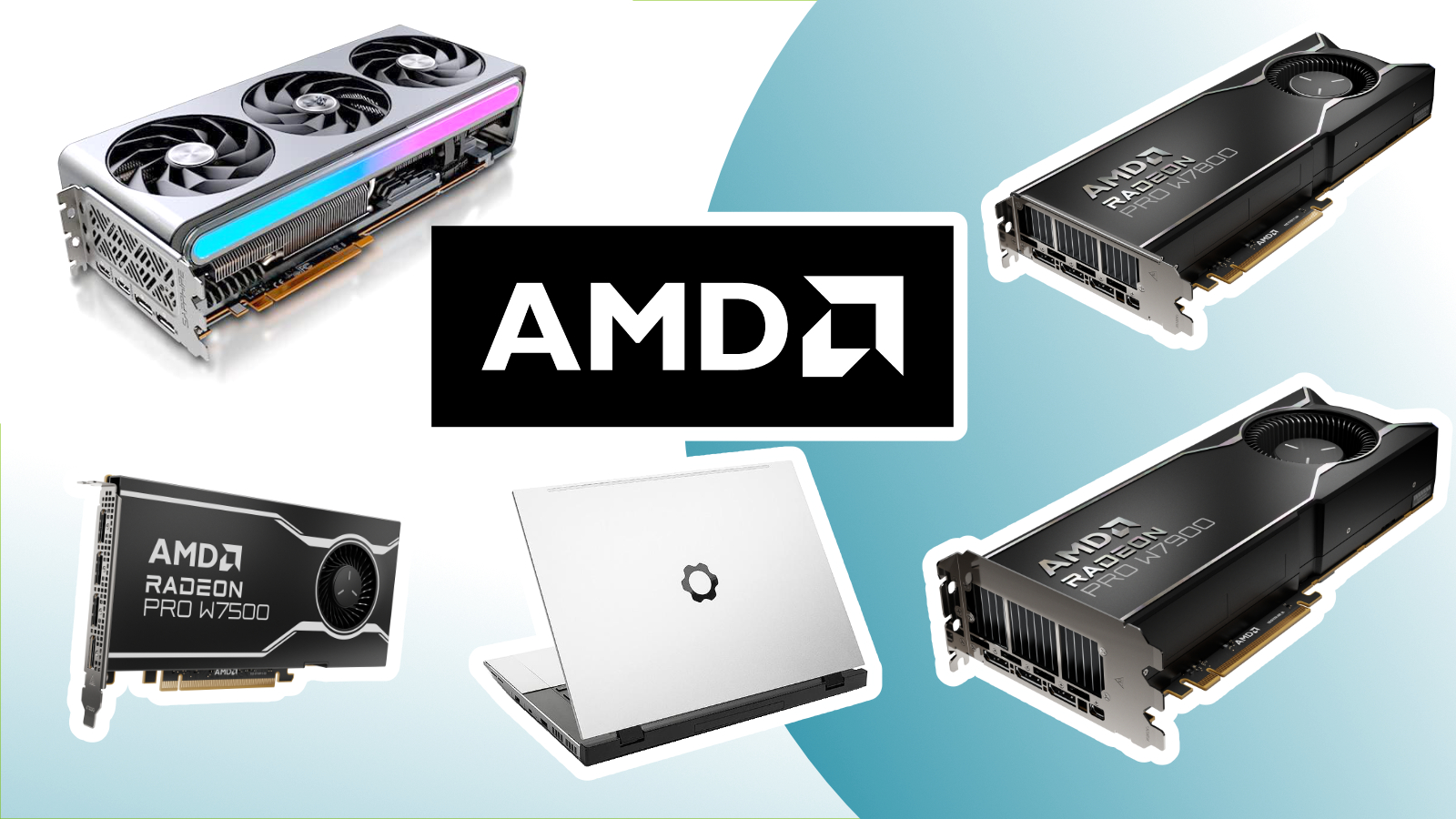
The best AMD graphics cards have been knocking it out of the park for years. The company's Ryzen and Threadripper lines of CPU are hardcore, but the best graphics cards (GPUs) that AMD makes have not yet gained the same foothold in the market. This is because content creation applications were created in or optimised for CUDA, NVIDIA's proprietary GPU program protocol. Applications that were optimised on more Open Standards, such as BlackMagic DaVinci Resolve, flew on AMD GPUs. See more on this in our FAQs at the bottom of the page.
For those who game and create on their PCs, AMD offers features such as AI Acceleration and Hardware RayTracing, which put their tech at the forefront of today's gaming cards. Below is our expert pick of the best graphics cards AMD currently offers. We've focused on specs like Video RAM and power consumption to work out which GPUs are best for a range of use cases. And of course, we've considered price, including options for a range of budgets.
Want a more general guide? See our best graphics cards post, or check out the rival best NVIDIA graphics cards.
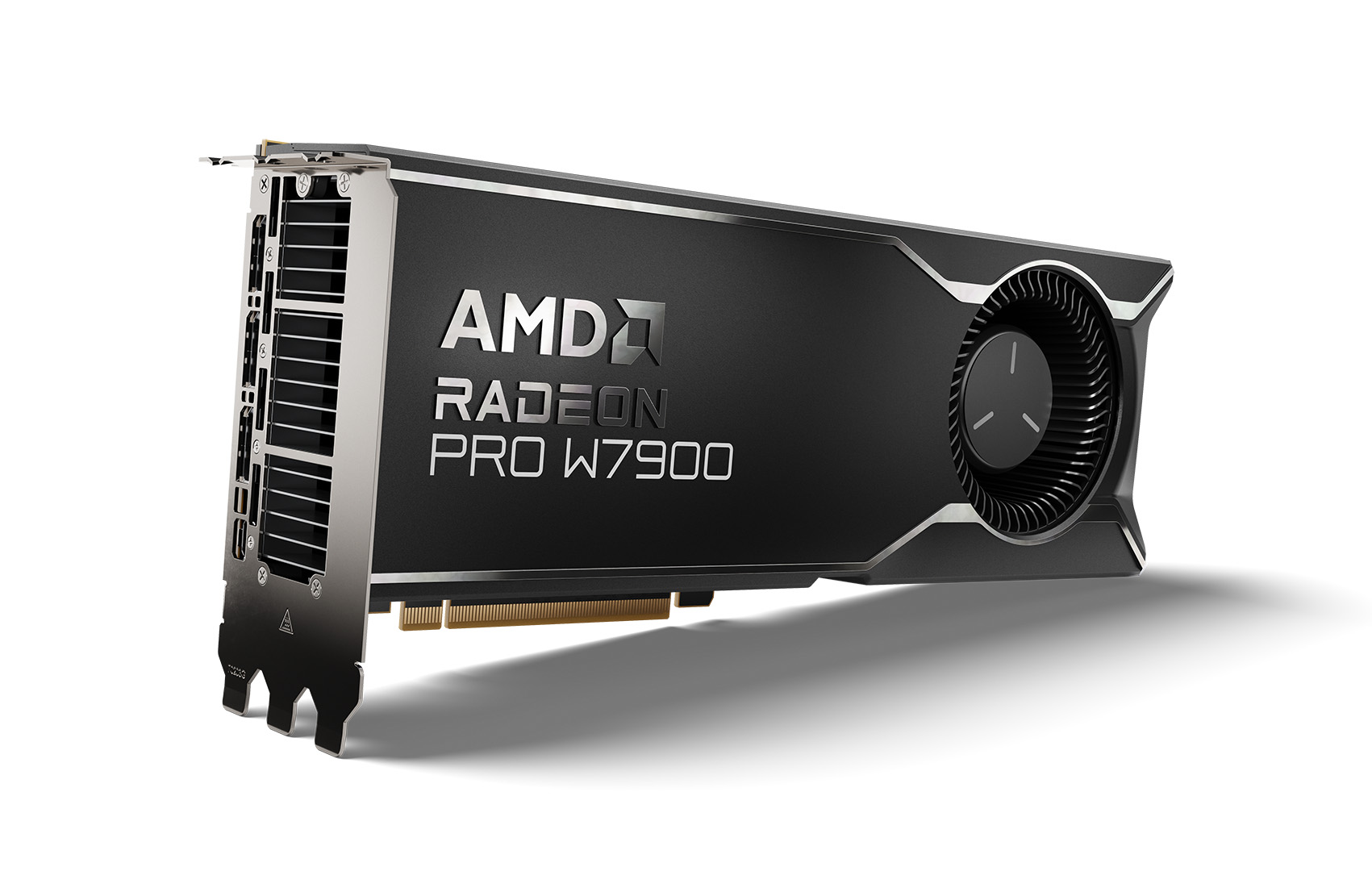
01. AMD RADEON PRO W7900
Specifications
Reasons to buy
Reasons to avoid
When released earlier in 2023, the AMD RADEON PRO W7900 shook up the Pro Graphics market as it offered unbeatable value in a Professional Graphics Card.
It features the latest RDNA™ 3 architecture with 96 Compute Units, Hardware Ray Tracing, Hardware Video Encoding and support for 12K Monitors at @120 Hz with the latest in colour technology. The AMD RADEON PRO is a next-generation powerhouse capable of any Content Creation task, from Game development to video and AI creation, while being pretty good at games.
The AMD RADEON PRO W7900 manages all of this while operating at a peak load of 295W using two standard 8-pin plugs and can be had for half the price of an equivalently specified card from other Graphics Card manufacturers.
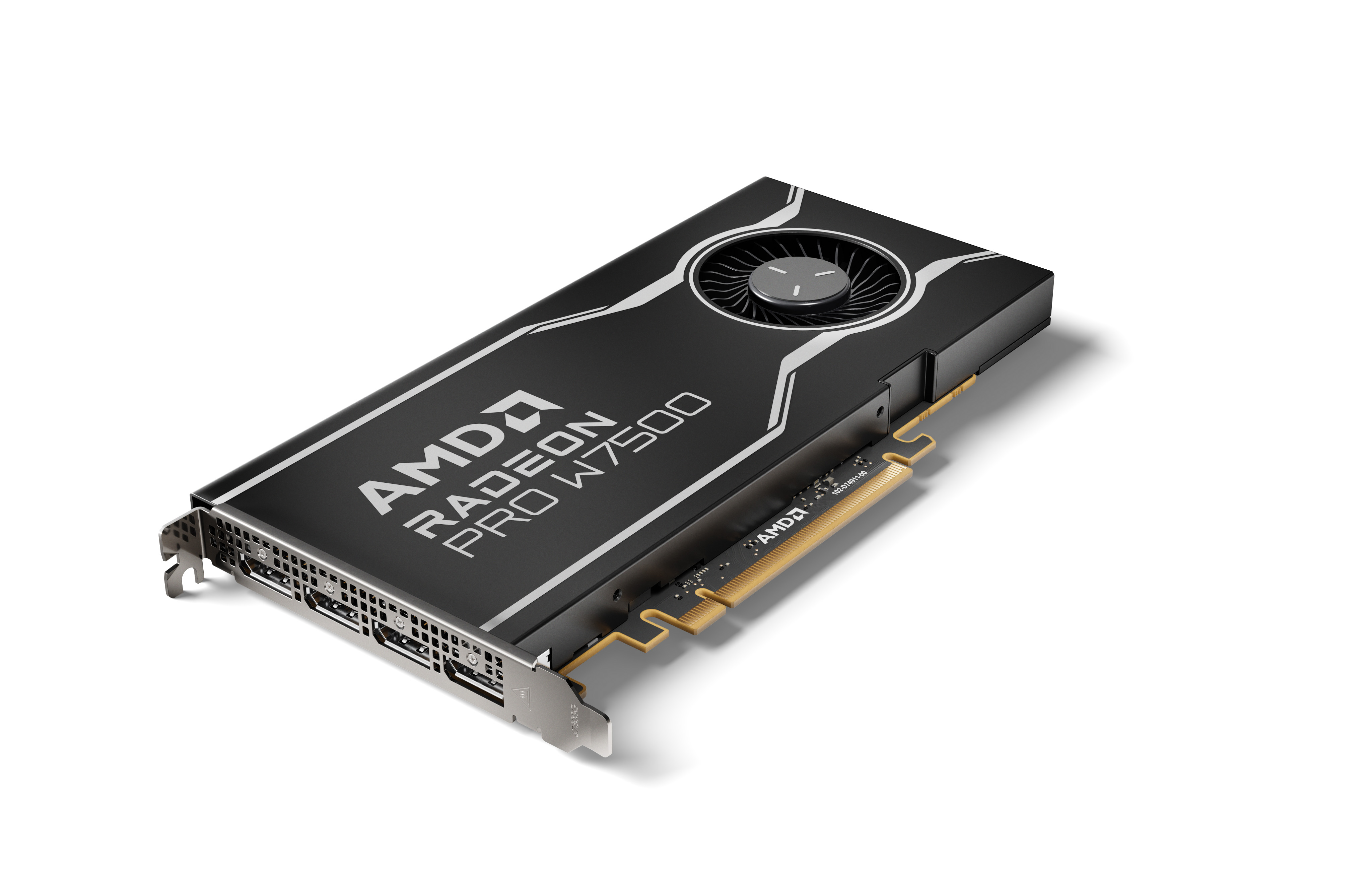
02. AMD RADEON PRO W7500
Specifications
Reasons to buy
Reasons to avoid
While AMD’s gaming cards (more on them later) are excellent all-rounders, AMD is really owning the Pro Graphics workspace with its latest batch of RDNA 3 powered cards which are challenging conventions about what to expect in a Pro Graphic GPU. Announced at SIGGRAPH 2023 and becoming available in September,, AMD launched two new cards into the Pro Graphics space, the AMD RADEON PRO W7600 and W7500.
Our pick is the AMD RADEON PRO W7500 because it offers so much while using so little. For a start, the card is physically tiny, taking up a single slot and is powered from the PCIE slot with a peak power draw of 70W, making it ideal for tiny towers or for PCs, which can use multiple GPUs, such as a render farm or homemade AI compute cluster.
Also, AMD PRO Cards tend to be excellent on viewport performance for a wide range of Design apps with certified drivers. So if your design work is predominantly 2D Vector or CAD based, the AMD RADEON PRO W7500 could be all the Graphics card you ever need in your workstation, with a very wallet friendly RRP of $429.
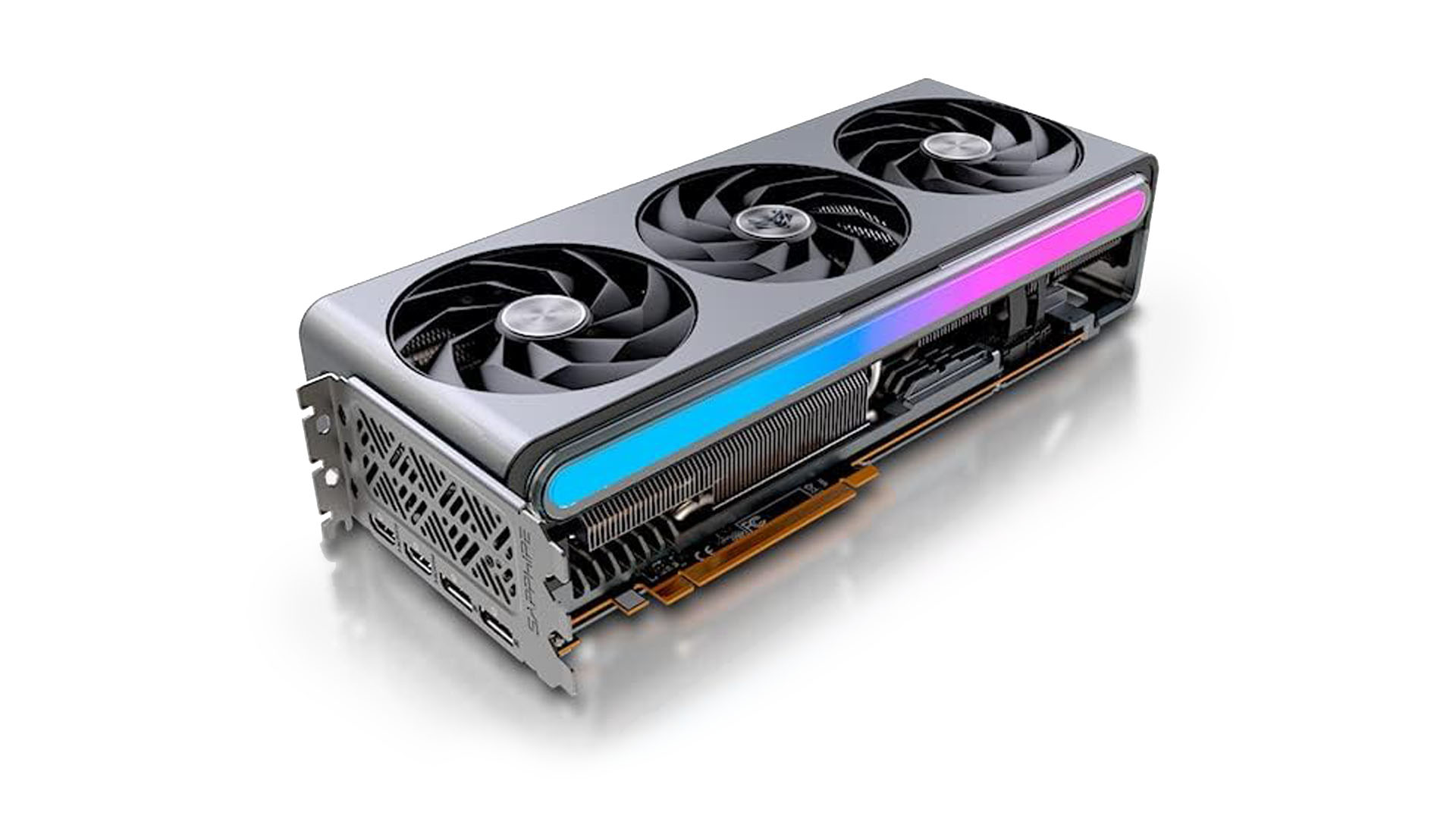
03. AMD RADEON R7900 XTX
Specifications
Reasons to buy
Reasons to avoid
It may seem weird to mention a Graphics Card that costs over $1000 as good value, but when compared by specs, the AMD RADEON R7900 XTX is precisely that.
The AMD RADEON R7900 XTX is AMD's current top-level gaming card. It offers 24GB of GDDR6 Video RAM, which matches the competition but at two-thirds of the retail price. Based on the latest RDNA™3 architecture, for the optimised content creation applications, for example, DaVinci Resolve, the AMD RADEON R7900 XTX will fly and also be an excellent option for gamers with FSR (AMD FidelityFX Super Resolution), which can double the performance of games frame rates with AI interpolation.
The AMD RADEON R7900 XTX also has a comparatively frugal 355W power draw. It is a standard two slot size and uses two traditional 8-pin connectors, making it an easy upgrade for existing systems.

04. AMD Radeon™ RX 7700S
Specifications
Reasons to buy
Reasons to avoid
As we mentioned in our best graphics cards for laptop post, AMD is part of a game-changing laptop revolution with its new Discrete laptop GPU, the AMD Radeon™ RX 7700S. With 32 compute units at 2200Mhz, this next-generation card does pack quite a punch.
As well as the impressive technology of the AMD GPU is the fact they are willing to work with laptop manufacturers such as Framework, which makes upgradeable laptops, and create a version of the RX 7700S that can be replaced later in the laptop's lifetime ready for the next generation of AMD card, for the next generation of games.
While we have seen upgradeable laptops before, the fact that the Framework uses a brand new high-end gaming GPU that supports the latest in tech, such as Hardware H265 decode and encode, 8GB of GDDR 6 memory makes any laptop that is equipped with an RX 7700S a compelling option. Still, in Framework 16, no other laptop is like it.
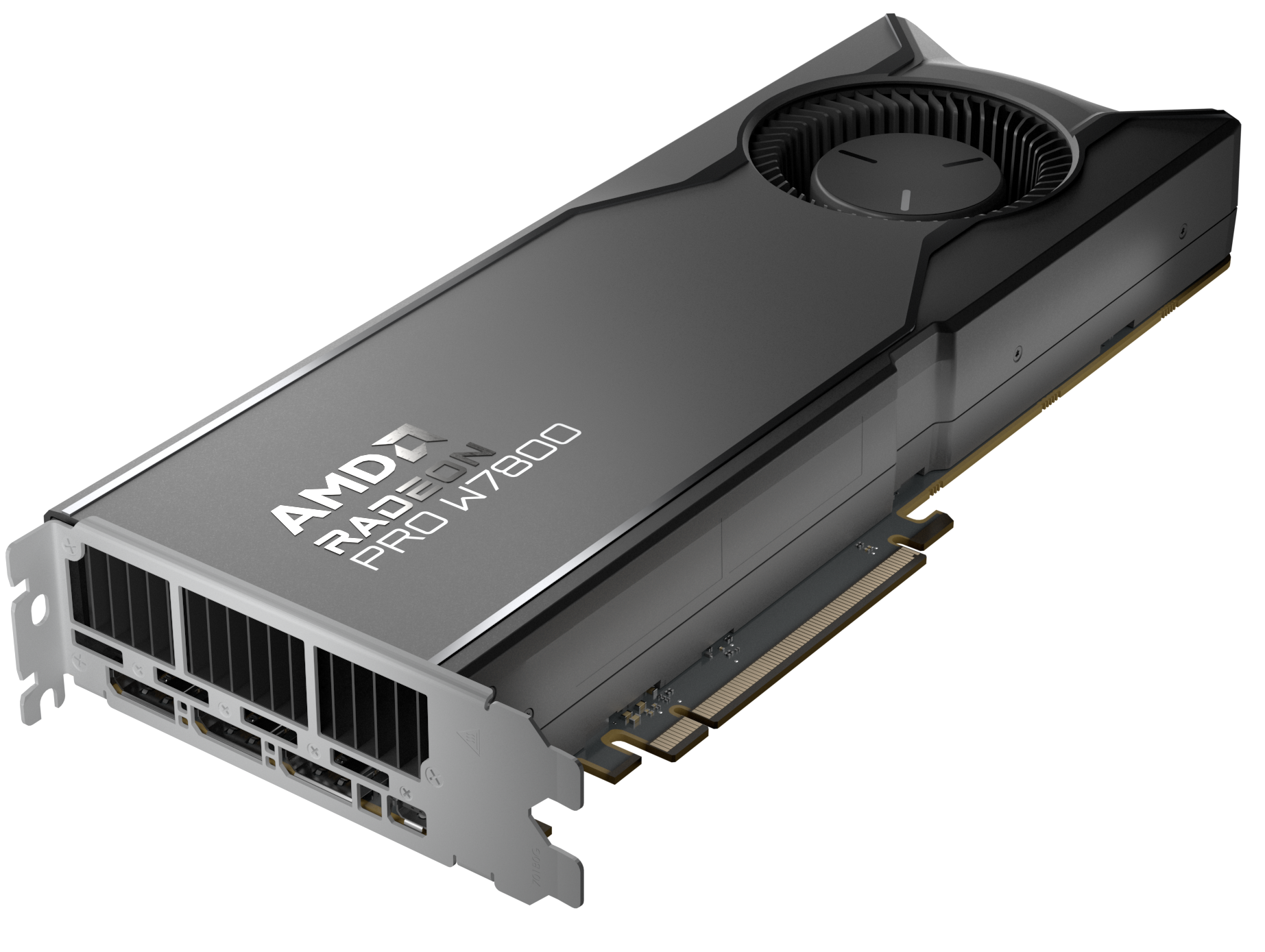
05. AMD RADEON PRO W7800
Specifications
Reasons to buy
Reasons to avoid
While the AMD RADEON PRO W7900 is our choice for the best AMD Graphics card, as it offers a game-changing amount of features at a fantastic price, the RADEON PRO W7900 is still expensive. The AMD RADEON PRO W7800 provides many advantages of its bigger sibling but at a lower price point.
In many ways, the AMD RADEON PRO W7900 and W7800 are technically identical; it's just the numbers that vary. There is still an enormous 32GB of Video RAM on the W7800 rather than 48GB, 70 Compute units instead of 96. The AMD RADEON PRO W7800 can still output 12k at 120hz while only taking up two slots and using a maximum of 280W of power.
This means that the AMD RADEON PRO is easier to double up in a workstation build, allowing Display functions to happen on one card and compute functions to occur on another, which is a standard professional workflow and why the AMD RADEON PRO W7800 is our pick for pro applications.
Why should I buy a AMD GPU?
AMD's latest batch of graphics cards for gamers and content creators offer a compelling array of products that provide performance, oodles of Video RAM and more content creation compatibility than ever. Many people prefer AMD's software driver suites for pro and gaming use, which are easier on the eye and easier to use than the competition.
To solve the compatibility issue mentioned above, AMD has recently released HIPify, which allows developers to easily convert CUDA to AMD's HIP code without much need for coding, which has enabled GPU render engines such as Maxon's Redshift to now work on AMD as well as NVIDIA Cards.
Will AMD CPUs and GPUs work together.
The recent upgrade to PCIE4 has meant that the latest generations of GPUs and CPUs can work together and share resources. While this does work with CPUs and GPUs from different manufacturers, AMD is the only company that offers a complete CPU and Discrete GPU product line, which means when using the excellent AMD PRO software, the user knows they have a system optimised to work together at every level.
Are previous generation AMD Gaming cards good value?
While the latest RDNA™3 Graphics Cards are excellent, the previous generation of Gaming and Pro Graphics cards are still available at heavy discounts. For gamers and content creators, our pick would be the AMD Radeon RX 6650 XT which can be found for around $300 and boats PCIE 4 and 8GB of Video Ram.
Should I get a previous generation AMD RADEON PRO Grahics card?
One of the most significant advantages of AMD Graphics cards is that they tend to come with more video RAM than competitors at lower price points. So, for example, video work needs GPUs with a lot of RAM which makes the previous generation top-end Pro card, the AMD RADEON PRO W6800 an outstanding bargain with its 32GB of video RAM for just over $1500
Daily design news, reviews, how-tos and more, as picked by the editors.

Mike Griggs is a veteran digital content creator and technical writer. For nearly 30 years, Mike has been creating digital artwork, animations and VR elements for multi-national companies and world-class museums. Mike has been a writer for 3D World Magazine and Creative Bloq for over 10 years, where he has shared his passion for demystifying the process of digital content creation.
